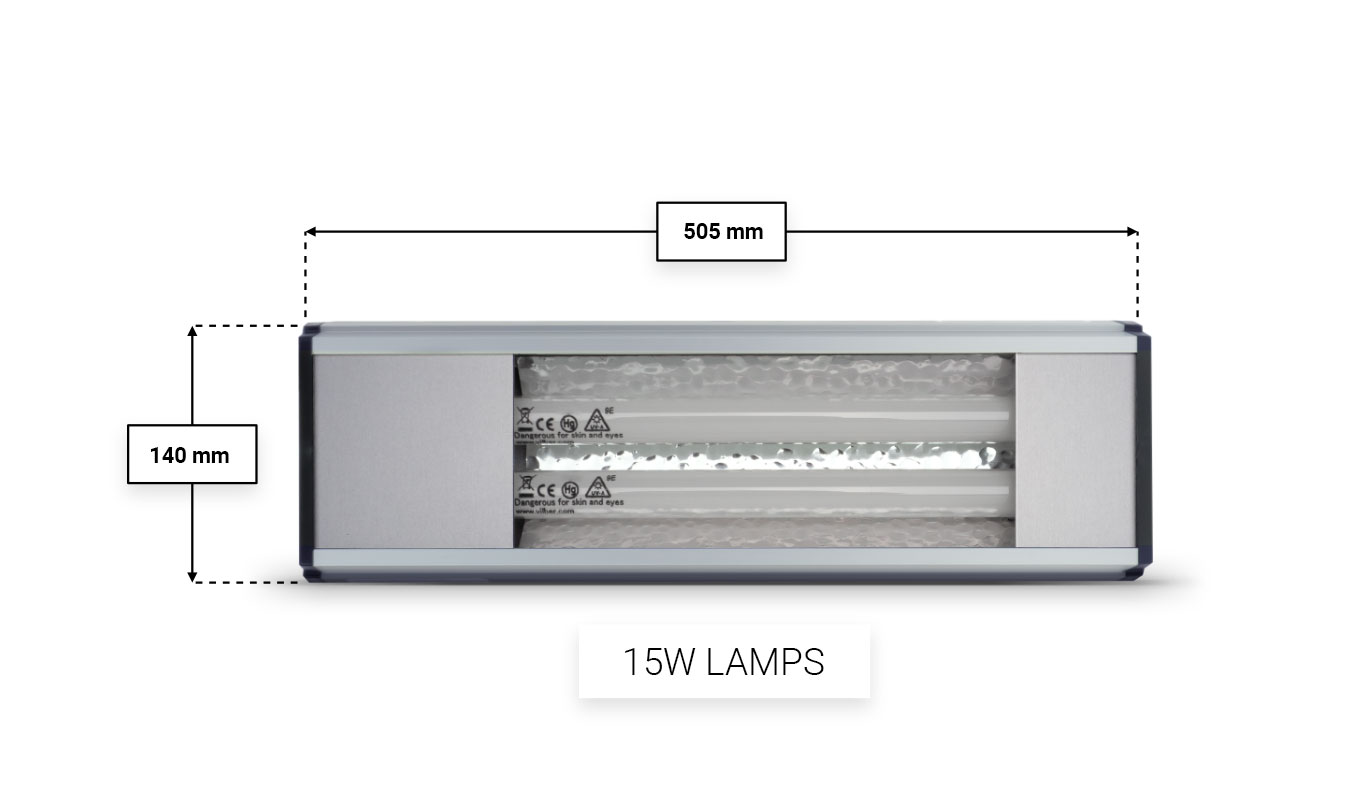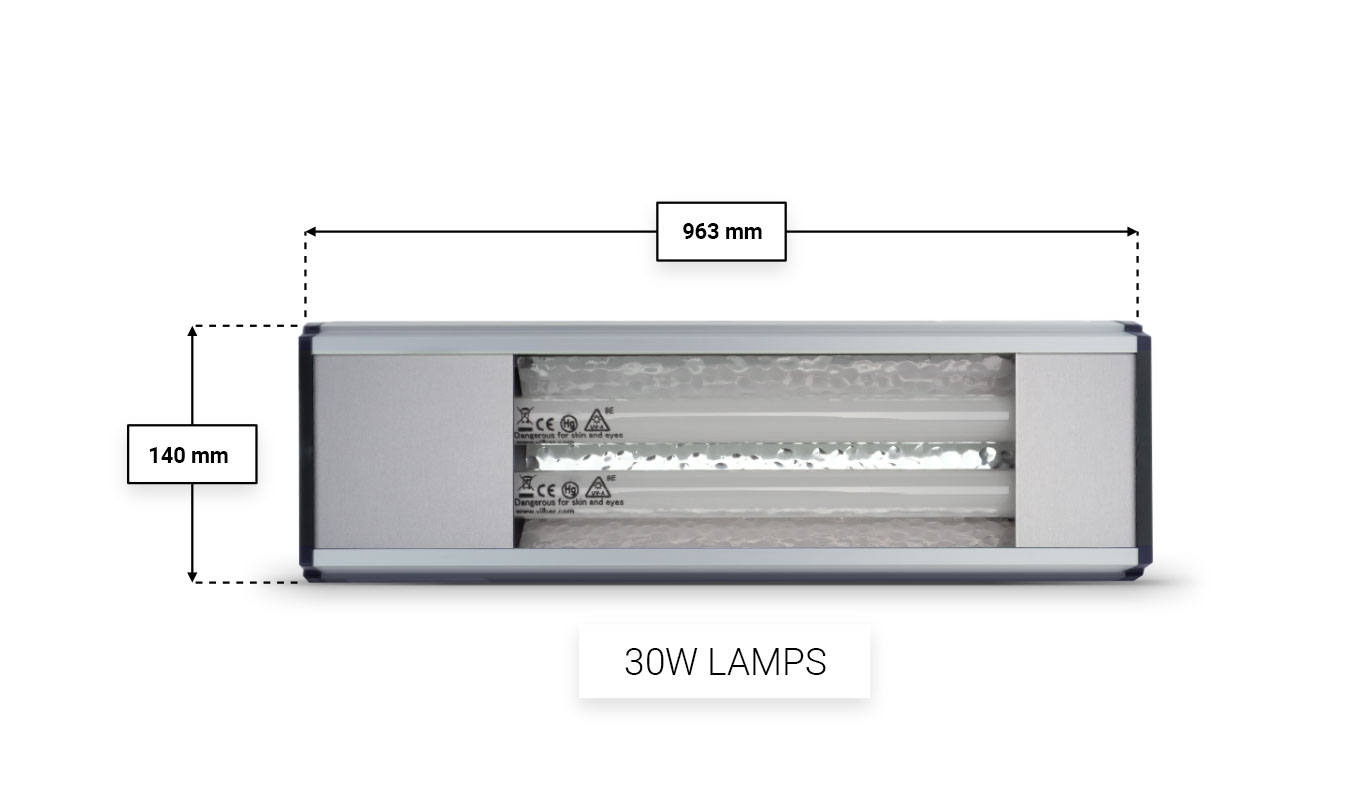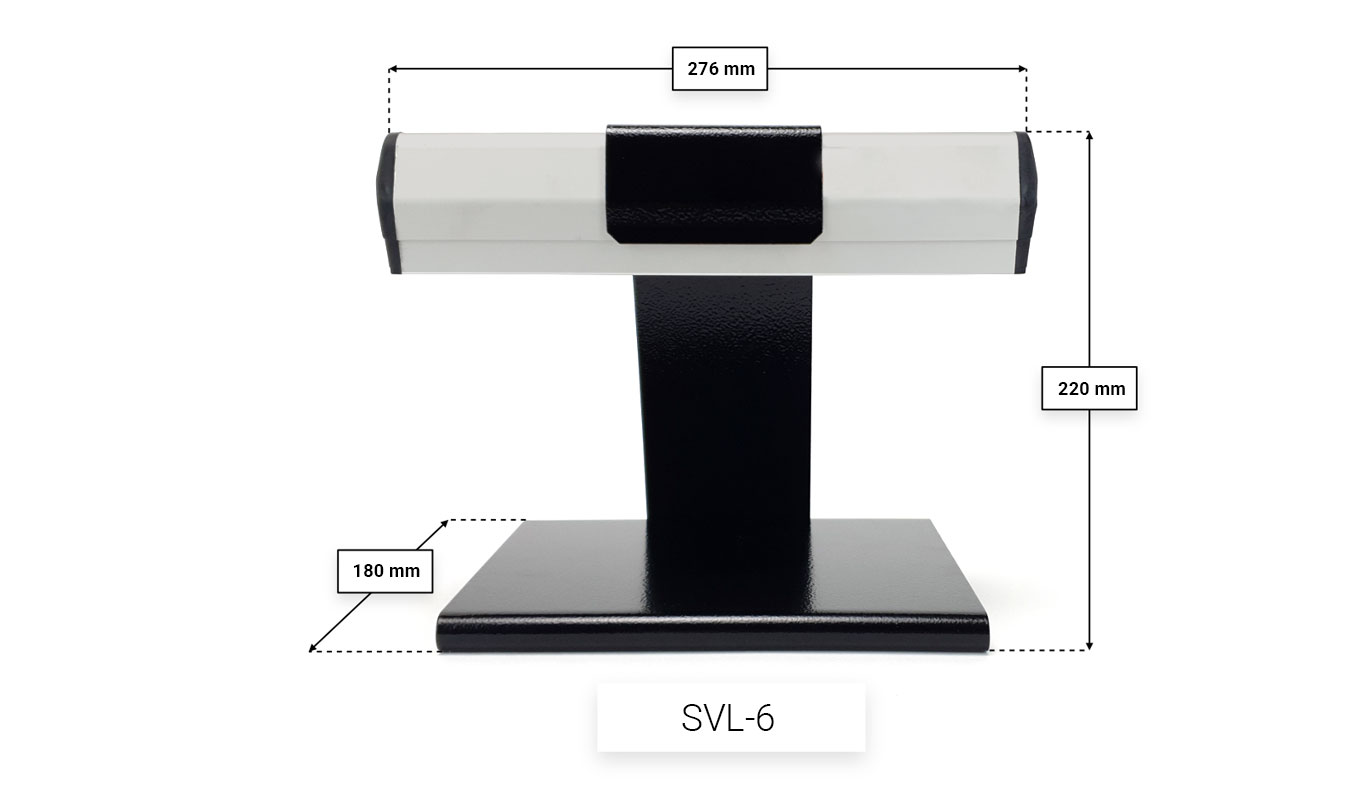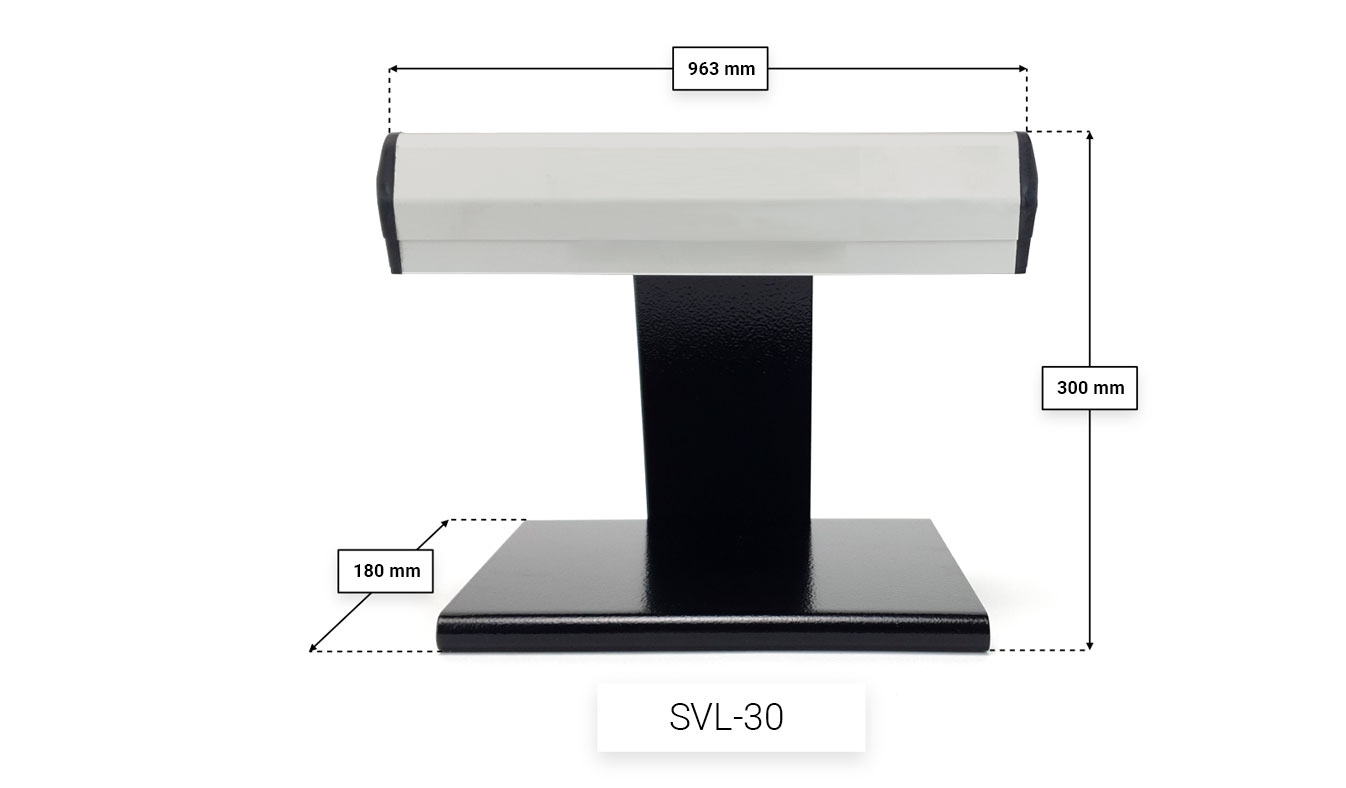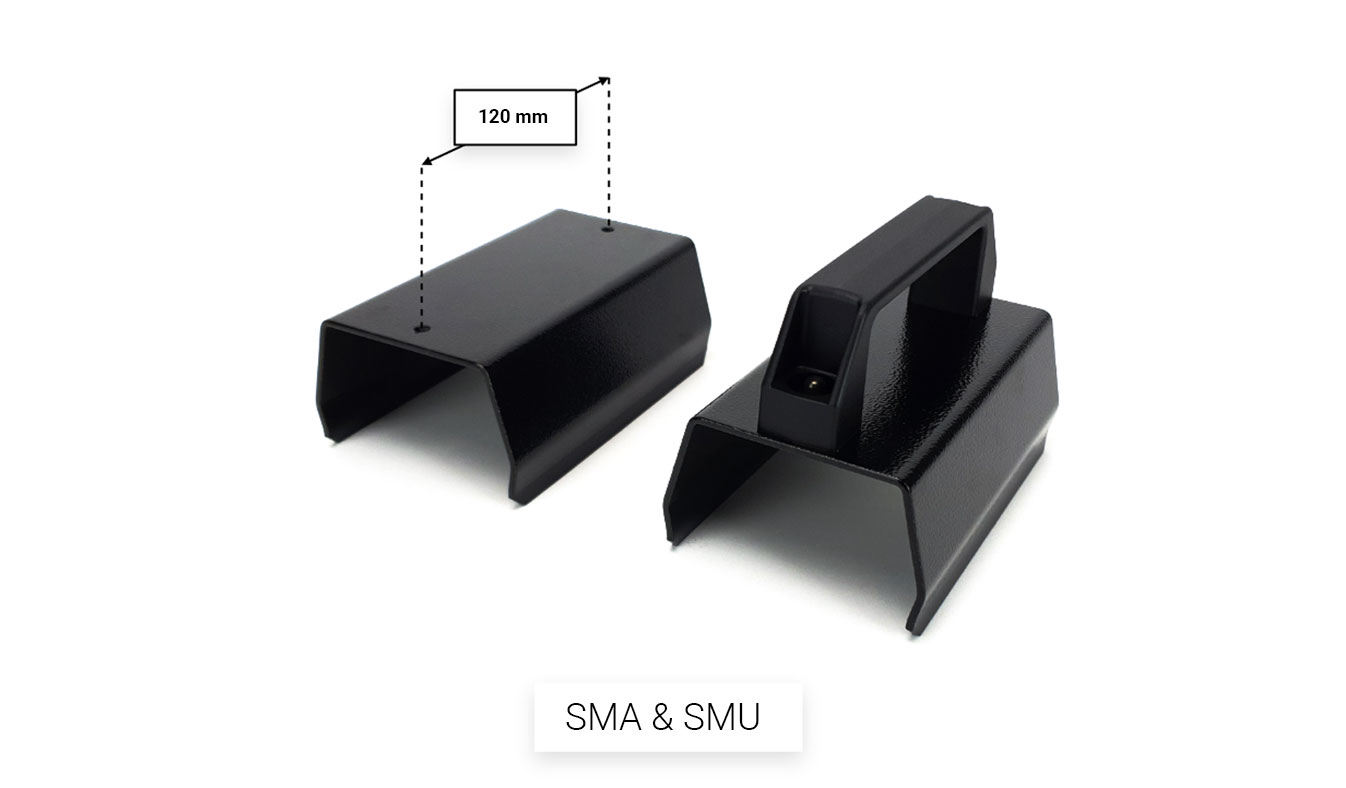UV
Germicidal Lamps
Check Our UV Germicidal Lamps
UV
Germicidal Lamps
Check Our Germicidal Lamps
UV
Germicidal Lamps
Check Our Germicidal Lamps


UV Master Technology
Highly concentrated UV radiations.


Easy To Handle
Lamp stand or holder to add versatility.


Long Lifetime
Anodized aluminum housing.


Ondulex Reflector
Reflect the maximum UV output.
Table Of Products
Germicidal UV lamps of 254 nm prevent contamination in research laboratories. The UV light emitted by a source is expressed in watts (W) and the irradiation density is expressed in watts per square meter (W/m2). For germicidal action, the dose is important. The dose is the irradiation density multiplied by time (t) in seconds and expressed in joules per square meter (J/m2). (1 joule corresponds to 1W.second). Low pressure lamps have their main emission at 254 nm where the action on DNA is 85% of the maximum value. The effective resistance of microorganisms to UV light varies considerably. In addition, the environment of the microorganism in question greatly influences the dose of radiation necessary for its destruction. Water, for example, can absorb some of the effective radiation depending on the concentration of contaminants it contains. Iron salts in solution are well-known inhibitors. Iron ions absorb UV light. The survival of microorganisms when exposed to UV light is given by approximation :
Irradiation time (sec) = Killing dose (mJ/cm²) / Lamp irradiance (mW/cm²)
Table Of Products
Germicidal UV lamps of 254 nm prevent contamination in research laboratories. The UV light emitted by a source is expressed in watts (W) and the irradiation density is expressed in watts per square meter (W/m2). For germicidal action, the dose is important. The dose is the irradiation density multiplied by time (t) in seconds and expressed in joules per square meter (J/m2). (1 joule corresponds to 1W.second). Low pressure lamps have their main emission at 254 nm where the action on DNA is 85% of the maximum value. The effective resistance of microorganisms to UV light varies considerably. In addition, the environment of the microorganism in question greatly influences the dose of radiation necessary for its destruction. Water, for example, can absorb some of the effective radiation depending on the concentration of contaminants it contains. Iron salts in solution are well-known inhibitors. Iron ions absorb UV light. The survival of microorganisms when exposed to UV light is given by approximation :
Irradiation time (sec) = Killing dose (mJ/cm²) / Lamp irradiance (mW/cm²)
Approximative killing dose values
| Yeasts | Dose 90% killing rate (mJ/cm²) | Dose 99% killing rate (mJ/cm²) |
| Bakers’ yeast 39 0.060 | 3.90 | 7.80 |
| Brewers’ yeast 33 0.070 | 3.30 | 6.60 |
| Common yeast cake 60 0.038 | 6.00 | 12.00 |
| Saccharomyces cerevisiae 60 0.038 | 6.00 | 12.00 |
| Saccharomyces ellipsoideus 60 0.038 | 6.00 | 12.00 |
| Saccharomyces sp. | 8.00 | 16.00 |
| Bacteria | Dose 90% killing rate (mJ/cm²) | Dose 99% killing rate (mJ/cm²) |
| Bacillus anthracis | 4.52 | 9.04 |
| B. megatherium sp. (spores) | 2.73 | 5.46 |
| B. megatherium sp. (veg.) | 1.30 | 2.60 |
| B. parathyphosus | 3.20 | 6.40 |
| B.suptilis | 7.10 | 14.20 |
| B. suptilis spores | 12.00 | 24.00 |
| Campylobacter jejuni | 1.10 | 2.20 |
| Clostridium tetani | 12.00 | 24.00 |
| Corynebacterium diphteriae | 3.37 | 6.74 |
| Dysentery bacilli | 2.20 | 4.40 |
| Eberthella typhosa | 2.14 | 4.28 |
| Escherichia coli | 3.00 | 6.00 |
| Klebsiella terrifani | 2.60 | 5.20 |
| Legionella pneumophila | 0.90 | 1.80 |
| Micrococcus candidus | 6.05 | 12.10 |
| Micrococcus sphaeroides | 10.00 | 20.00 |
| Mycobacterium tuberculosis | 6.00 | 12.00 |
| Neisseria catarrhalis | 4.40 | 8.80 |
| Phytomonas tumefaciens | 4.40 | 8.80 |
| Pseudomonas aeruginosa | 5.50 | 11.00 |
| Pseudomonas fluorescens | 3.50 | 7.00 |
| Proteus vulgaris | 2.64 | 5.28 |
| Salmonella enteritidis | 4.00 | 8.00 |
| Salmonella paratyphi | 3.20 | 6.40 |
| Salmonella typhimurium | 8.00 | 16.00 |
| Sarcina lutea | 19.70 | 39.40 |
| Seratia marcescens | 2.42 | 4.84 |
| Shigella paradysenteriae | 1.63 | 3.26 |
| Shigella sonnei | 3.00 | 6.00 |
| Spirillum rubrum | 4.40 | 8.80 |
| Staphylococcus albus | 1.84 | 3.68 |
| Staphylococcus aureus | 2.60 | 5.20 |
| Streptococcus faecalis | 4.40 | 8.80 |
| Klebsiella terrifani | 2.60 | 5.20 |
| Streptococcus hemoluticus | 2.16 | 4.32 |
| Streptococcus lactus | 6.15 | 12.30 |
| Streptococcus viridans | 2.00 | 4.00 |
| Sentertidis | 4.00 | 8.00 |
| Vibrio chlolerae (V.comma) | 3.50 | 7.00 |
| Yersinia enterocolitica | 1.10 | 2.20 |
| Mould Spores |
Dose 90% killing rate (mJ/cm²) | Dose 99% killing rate (mJ/cm²) |
| Aspergillus flavus 600 0.003 | 60.00 | 120.00 |
| Aspergillus glaucus 440 0.004 | 44.00 | 88.00 |
| Aspergillus niger 1320 0.0014 | 132.00 | 264.00 |
| Mucor racemosus A 170 0.013 | 17.00 | 34.00 |
| Mucor racemosus B 170 0.013 | 17.00 | 34.00 |
| Oospora lactis 50 0.046 | 5.00 | 10.00 |
| Penicillium digitatum 440 0.004 | 44.00 | 88.00 |
| Penicillium expansum 130 0.018 | 13.00 | 26.00 |
| Penicillium roqueforti 130 0.018 | 13.00 | 26.00 |
| Rhizopus nigricans | 111.00 | 2220.00 |
| Virus | Dose 90% killing rate (mJ/cm²) | Dose 99% killing rate (mJ/cm²) |
| Hepatitis A 73 0.032 | 7.30 | 14.60 |
| Influenza virus 36 0.064 | 3.60 | 7.20 |
| MS-2 Coliphase 186 0.012 | 18.60 | 37.20 |
| Polio virus 58 0.040 | 5.80 | 11.60 |
| Rotavirus | 8.10 | 16.20 |
| Protozoa | Dose 90% killing rate (mJ/cm²) | Dose 99% killing rate (mJ/cm²) |
| Cryptosporidium parvum 25 0.092 | 2.50 | 5.00 |
| Giardia lamblia | 1.10 | 2.20 |
| Algae | Dose 90% killing rate (mJ/cm²) | Dose 99% killing rate (mJ/cm²) |
| Blue Green 3000 0.0008 | 300.00 | 600.00 |
| Chlorella vulgaris | 10.00 | 20.00 |
It is advisable that the lamps are hung on the ceiling and place in the middle of the room, so that you can have the best UV repartition. The negative parts (i.e. the under-part of a table for example) won’t be sterilized. Indeed, the sterilization is efficient only if the areas to be sterilized are irradiated directly by the lamps. The germicidal lamps can’t work when there are people inside the room. This is why we recommend the door to be fitted with a protection system, so that the lamp switches off when somebody enter into the room. Radiation has to be perpendicular to the area which needs to be sterilized.
| Model | Wavelength (nm) | Tubes x Power (W) | Irradiance (mW/cm²) (1) |
| VL-215.G | 254 | 2 x 15 | 0.76 |
(1) Irradiance measured at 2 meters, except * measured at 15cm
| Model | Wavelength (nm) | Tubes x Power (W) | Irradiance (mW/cm²) (1) |
| VL-330.G | 254 | 3 x 30 | 0.191 |
(1) Irradiance measured at 2 meters, except * measured at 15cm
| Power (W) |
3 UV Tubes | 2 UV Tubes | 1 UV Tubes |
| 30 | 11.25m² (2.5mx4.5m) | 8.75m² (2.5mx3.5m) | 6.25m² (2.5mx2.5m) |
| 15 | 6m² (1.5mx4m) | 4.50m² (1.5mx3m) | 3.0m² (1.5mx2m) |


